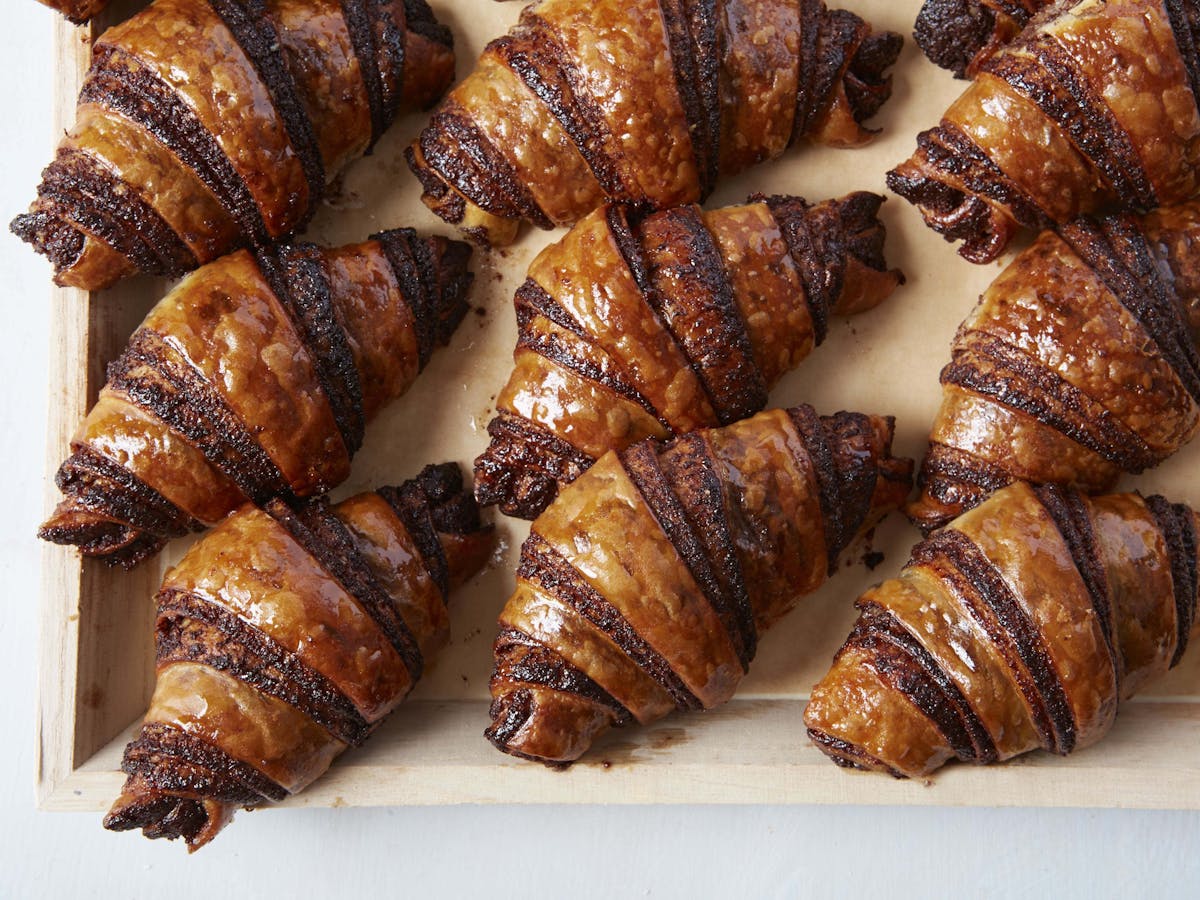Understanding the Art of Pastry Shop Products: From Freshly Baked Breads to Irresistible Pastries and Finger Foods
From the science behind the best loaf of bread, where fermentation and gluten development play critical duties, to the skill required for developing layered breads, each facet exposes a compelling narrative of craftsmanship. The convenience of finger foods illustrates how flavor and texture can be artfully integrated to engage varied taste choices.
The Scientific Research of Bread Making
At the heart of every loaf of bread lies a remarkable interaction of chemistry and biology. The process of bread making starts with the combination of flour, salt, water, and yeast-- each ingredient playing an important role in the final item.
Yeast, a living microorganism, ferments the sugars present in the flour, creating co2 and alcohol at the same time. The carbon dioxide gas develops bubbles in the dough, causing it to increase and create a light appearance. The temperature and humidity during fermentation considerably influence yeast activity and, as a result, the bread's flavor and texture.

Mastering Pastry Methods
Just how can one achieve the delicate balance of structure and taste that specifies remarkable bread? Mastering bread methods requires a deep understanding of active ingredients, techniques, and the scientific research behind them. Basic to this craft is the option of top quality ingredients-- flour, butter, sugar, and eggs-- each playing a critical role in the last item's flavor and texture.
The technique of lamination, which involves folding layers of dough and butter, produces the desired flakiness in breads like croissants and smoke bread. Accuracy in temperature is crucial, as butter ought to stay cold to ensure optimal layers. In a similar way, proper blending methods, such as the creaming method for cakes, ensure also unification of air and fat, causing a light and ventilated crumb.
Furthermore, preserving the ideal moisture levels throughout baking can considerably influence the outcome, guaranteeing that breads climb properly and achieve that golden-brown finish. Lastly, the art of bread additionally requires perseverance and technique; each effort improves one's skill and understanding of the elaborate equilibrium called for to produce alluring pastries that delight the senses. Proficiency in these methods eventually distinguishes a knowledgeable bread chef from an amateur.
Kinds Of Finger Foods
The world of cooking thrills extends beyond pastries to incorporate a wide range of finger foods, which are commemorated for their convenience and convenience. These bite-sized treats are perfect for social events, offering a variety of flavors and appearances that satisfy diverse palates.

On the sweeter side, small tarts and bite-sized cupcakes supply a delightful coating to any meal, attracting those with a craving for sweets. Cheese and charcuterie boards offer as an advanced selection, permitting guests to personalize their bites with a selection of meats, fruits, cheeses, and helpful resources nuts.
Taste Profiles in Baking
Cooking is an intricate dancing of taste accounts that incorporates wonderful, full-flavored, and umami notes to develop a harmonious experience for the taste. Understanding these profiles is crucial for bakers looking for to raise their creations.
Components such as delicious chocolate and caramel present intricate wonderful notes that can either dominate or complement other flavors. link Ingredients like seasonings, cheeses, and herbs can transform a basic dough into a multifaceted taste experience.
Umami, often ignored in baking, plays a considerable duty in enriching flavors. Components such as aged cheeses, fermented items, and even certain nuts add to a tasty deepness that boosts overall taste.
In addition, the interaction of level of acidity from ingredients like buttermilk or citrus enthusiasm can lighten up flavors, using a rejuvenating counterpoint to sweet taste. By thoughtfully combining these flavor profiles, bakers can craft items that reverberate with varied tastes, developing an unforgettable cooking experience. Inevitably, mastering flavor accounts is key to innovation worldwide of baking.
Important Baking Tools and Components
Recognizing taste profiles in baking collections the stage for choosing the right devices and active ingredients that facilitate the development of outstanding baked goods. A reputable collection of cooking frying pans-- such as sheet pans, loaf pans, and cake frying pans-- is vital for accomplishing preferred forms and structures.
In terms of components, high quality matters significantly. Flour acts as the backbone of many recipes; picking the appropriate type-- be it bread, bread, or all-purpose flour-- can significantly affect the result. Sugar not just sweetens however additionally adds to structure, while eggs function as binders and leavening representatives. Cooking powder and cooking soft drink are necessary for producing lift in cakes and pastries.
In addition, including taste boosters like vanilla extract, seasonings, and citrus passion can boost your creations. By ensuring accessibility to these basic devices and ingredients, bakers can with confidence start their culinary trip, crafting a varied selection of fascinating baked goods.
Final Thought
To conclude, the art of bakeshop items includes a profound understanding of both imaginative strategies and scientific concepts. Mastery in bread making, pastry preparation, and finger food discussion reveals the elaborate partnerships in between active ingredients and procedures. Checking out diverse flavor accounts enhances the baking experience, while important devices and ingredients supply the foundation for success. Eventually, the charming official statement globe of baking thrives on the harmonious interplay of scientific research and imagination, leading to a myriad of delightful cooking productions.
Exactly how can one attain the delicate equilibrium of appearance and taste that defines phenomenal bread? Essential to this craft is the selection of high-quality active ingredients-- flour, butter, sugar, and eggs-- each playing a vital role in the last product's flavor and appearance.

Understanding flavor accounts in baking collections the stage for choosing the right tools and components that assist in the production of remarkable baked products. Exploring diverse taste accounts enhances the baking experience, while vital tools and ingredients supply the structure for success.